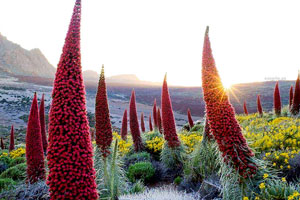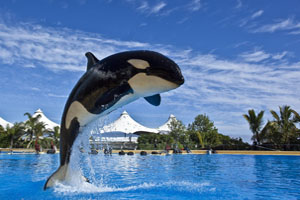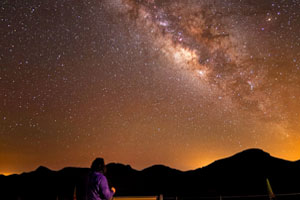About Tenerife
Tenerife is the biggest island of the Canary archipelago. It is situated in the Atlantic Ocean close to the Northwest African coast.
Square – 2034 km²
Population – 899 833
Currency – euros
Language – Spanish
Capital of the island – Santa Cruz
Like other Canary Islands Tenerife has a volcanic origin, in the very centre of it there is the great volcano Teide (3718 m) that is the highest point not only of Tenerife but also of whole Spain.
The Canary Islands belong to the Kingdom of Spain though geographically they are mostly referred to as part of the African continent, that make the Canary Islands a very special place. Tourists will find here a European level of service, mild climate and rich nature with exotic plants. You have probably heard the Canary Islands to be called "islands of eternal spring", do you know why? Because it's always warm and comfortable weather here due to their unique position in the Atlantic Ocean. It's never too cold or too hot here. I would say that it's the best climate in Europe. The temperature varies during the year from 20° to 29°C. As for the nature you will be amazed how fast the landscape changes while you are moving around the island, each valley has its own special view. That's why you always want to come back and discover new gorgeous places in Tenerife.
Read also:
Useful information for any tourist
History of Tenerife
Nature
Popular touristic villages
Most visited places in Tenerife



Useful information for any tourist
Are you first time in Tenerife? What should any new tourist know about the island?
The local people of Tenerife are very friendly and always ready to help guests of the island. However you'd better get acquainted with the traditions and customs of the country where you are planning to go.
Let's start with the currency of Spain - it's euro. If in your country you have another currency you'd better exchange the money before the trip not to lose time in your vacations.
Take sun cream and be careful for the first few days. The weather in Tenerife is very good, mild wind blows from the ocean and you don't notice how burnt you get. Don't let it happen and use creams from the very first day and cover yourself under the sun.
In Tenerife, like in the whole of Spain, there is a custom to close all shops and offices in the afternoon, these hours of rest are called siesta. So don't expect a bank or a shop to be open at 3 p.m. Go shopping in the morning time or after 5 p.m. Though the big trading centres do not close for siesta. Don't bargain in the shops it's not a tradition here.
As for the public transport in Tenerife I would say that it's not very comfortable. The schedule of buses is not very substantial and even those few buses that are in the schedule are always late. The routes are very long so if you go to another part of the island you will learn all villages and small towns on the way as far as you will visit all of them. If you need to go somewhere close just take a taxi, it will cost around 5-7 Euros inside one touristic village.
If you want to travel around the island you can rent a car and make your own route. Please be careful, don't rent a car that doesn't have all inclusive insurance, in Spanish it's "seguro a todos riesgos". Thus you can enjoy your trips without worrying about the car.
I would also advise you to take an arranged trip with a guide; there are plenty of routes so you can choose the most suitable for you. During the excursions guides will give you many interesting facts about Tenerife, its history, traditions, local people and others.
Like in many countries usually you leave tips in restaurants and bars (5-10% of the bill) and to housekeepers.
But to be totally prepared for your stay in Tenerife you need to remember Spanish word "mañana", that means "tomorrow". Believe me you will hear it a lot here. Island people are never in a hurry, they prefer to enjoy their day instead of fussing around. So, just relax and enjoy your holidays in Tenerife.
History of the Canary islands
According to the most popular theory first people appeared on the island in 200 B.C. They were called Guanches. Tenerife was divided into 9 little kingdoms, in the head of each it was mencey (king). They practiced agriculture and hunting. In 1402 first Spanish people came and started conquista (conquest) in the name of Queen. The war lasted almost one century. In the end the whole island was conquered by the Spanish, Guanches either passed away in the war or got into the slavery. Step by step the guanche assimilated with the Spanish and till now islanders call themselves proudly "Guanches".
The first capital of Tenerife was la Laguna, later the administrtion moved to Santa Cruz but till now la Laguna is the most important historical city in Tenerife. It's in the list of UNESCO.
Nature
The vegetation of Tenerife varies a lot. Any visitor of the island is astonished with such a variety of trees, bushes and flowers. In total in Tenerife there are about 1400 kinds of plants, 200 of which are endemic (not existing in other regions). Underwater inhabitants are also numerous: about 400 different kinds of fish, several kinds of turtles, dolphins, whales etc, that makes Tenerife very attractive to dive.
On the land there are many kinds of animals and none of them are dangerous for a human. In the mountains you can often see rabbits, sometimes they go down to the coast but don't stay there long time and come back to the mountains. Tenerife is famous for its big lizards Gigantesqui, that are endemic as well. Lizards are a simbol of the Canary islands, you will find many souvenirs in shape of lizard in the shops.
Main touristic villages
Las Américas (Adeje) and Los Cristiaos is the most popular touristic place of Tenerife, situated in the very southern part of it. Here there are a lot of hotels, restaurants, bars and beautiful beaches. Every day is like festive day here: thousands of tourists are walking along the coast, sunbathing on cosy beaches, swimming in the ocean, and in the night dancing and enjoying the music in the most famous bar street Verónicas.
Los Gigantes (Santiago del Teide) and Playa la Arena is another big touristic village situated in the South-West of Tenerife. it's famous for its beaches with black volcanic sand and huge rocks Los Gigantes that look like giants standing by the water. Tourists come here to find calm place with amazing views and restaurants with traditional Canary cuisine.
Puerto de la Cruz (La Orotava) is a touristic town in the North of the island. A few centuries ago it was an important port of Tenerife. Now it attracts tourists with its beautiful arquitecture, comfortable hotels and Loro Park, one of the most famous parks with animals in the world. However, if you are looking for beach vacations you'd better choose to go to the South of Tenerife because in Puerto de la Cruz the weather is not always good enough to sunbathe.
El Médano is another little touristic village in the South-East of Tenerife where surfers from the whole world come as it's always strong wind here blowing from the East and making the bays of this coast perfect for surfing. There is also a beautiful beach here that is 3 km long.
Most visited places in Tenerife
Where does a tourist go in Tenerife?
Teide
For sure, the first place to visit is the National Park and volcano Teide, the highest point of Spain (3718 m). Having entered the National Park you find yourself in the crater of the Old Volcano, in the center of which the pick of Teide is. Look around and you will understand why the landscape of Teide is usually called lunar. You feel like you are in another planet, there are formations of solid lava, multicoloured mountains of minerals and very few vegetation that doesn't look earthly either. It's possible to go up to the pick of Teide with a cable way (open every day, the ticket price is 27 euros) that brings you to the height of 3555 m. If you want to climb to the very top of it you need to book a special permission (for free) on this webpage: www.reservasparquesnacionales.es. With this permission you are allowed to go along the path till the top and enjoy astonishing views to whole Tenerife, the ocean and other Canary islands.
Loro Park
Only 32 years ago the Kiessling family founded a small park with a collection of parrots ("loro" is Spanish for "parrot") and now it's one of the most famous parks in the world where so many different kinds of animals live. All park is green, it looks like jungle. Here you see tigers, gorillas, penguins and many other. Each is individually cared and has environment so naturally recreated. In Loro Park there are 4 shows prepared for the audience: shows of parrots, sea lions, dolphins and killer whales (orcas), the last-named is especially spectacular, you can see show of orcas only in two places in the world: here and in Miami.
Icod de los Vinos
It's a tipical Canary town in the North of Tenerife often visited by tourists. Here you see the biggest Dragon tree in the world and visit bodegas (Canary wine shops) where you can try local wine and liqueurs for free. The most famous wine produced here is Malvasia, also called "wine of kings" as it was always served to Spanish kings on their visits to Tenerife. The taste of Malvasia is very special due to the mineral-rich soil where the grapes are grown.
Garachico
This little town situated on the ocean coast suffered a lot during its history. In XVI and XVII Garachico was the main port of Tenerife till a volcanic erution destroyed significant part of the town in 1646. It was reconstructed but in 1706 the eruption repeated with even more destructive force and Garachico was rebiult again but this time just as a fisherman village. The port was moved to Puerto de la Cruz.
Now Garachico is a touristic place where you can enjoy walking the coast and bathing in natural volcanic pools created by lava. Here Fast And Furious 6 was shot and you will easily recognize the scenery.
Masca
The valley Masca is famous for its breathtaking views. Here 2 rocks 700 m high are standing in front of each other and the road goes inside leading to the village of the same name - Masca. It's surprising why people settled down in this hard-to-reach place, the village is totally isolated by huge rocks and the only way to get to it was by a path going along the edge. Probably the first settlers were pirates hiding form the law, or they could have been exiles of local tribes of Guanches, but anyway they chose very hard conditions to live. The road was finally built in the 60s of the XX century and nowadays we can easily go to the valley Masca to enjoy its incredible views.
 English
English
 Русский
Русский
 Polski
Polski
 Español
Español
 Deutsch
Deutsch
 Français
Français
 Български
Български